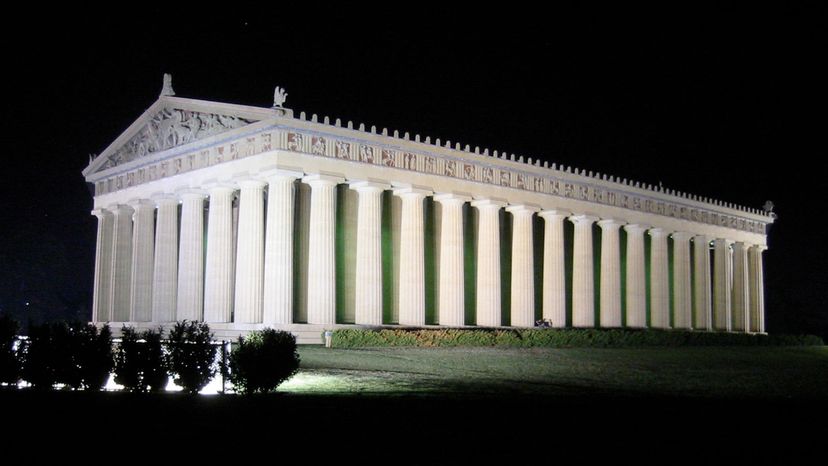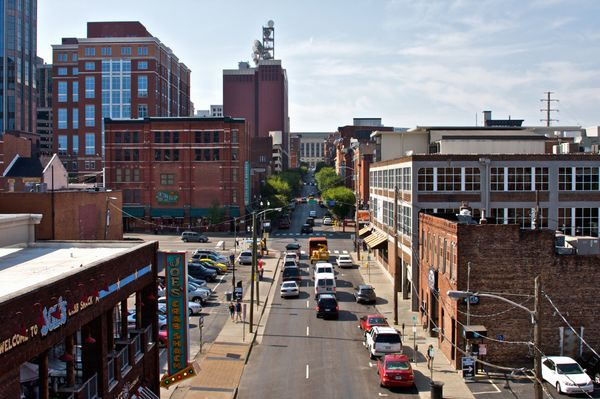
At first, no one expected this building to last: The Tennessee Centennial Exposition — picture something like a World's Fair or Walt Disney World's Epcot — was held in Nashville in 1897 and it featured a full-scale replica of the famous Parthenon in Greece. The plaster building, which fit in with Nashville's ambition to be the "Athens of the South," housed an art exhibition.
Over six months, 1.8 million people visited the exposition, small when compared with the 27 million who turned out for the Chicago World's Fair of 1893, but huge for Nashville, which at the time had a population of 100,000. As a 1921 newspaper put it, "the general effect of the cream-colored staff structure with the brilliant colors in the frieze and gables so overshadowed all the other buildings that when the exposition was over, the people demanded its preservation and it became a shrine to the residents and visitors of Nashville."
Advertisement
But this shrine was not built to last. By 1918, the building had disintegrated so badly, it had to be closed for safety reasons. However, thanks to popular demand, the city decided to rebuild it as a permanent concrete structure in 1920. The Nashville Parthenon reopened to the public in 1931.
As with the Greek Parthenon, the columns on the Nashville structure are not completely straight, but have a slight swelling, called entasis that makes them look straight at a distance. The structure is also full of friezes and carvings, and includes a replica of the famous Elgin marbles, now known as the Parthenon marbles. (These marble sculptures were originally part of the Parthenon but were removed by the British Earl of Elgin and sold to the British Museum in 1816; the entire transaction remains a point of dispute between Britain and Greece.) And while the original Parthenon is a ruin, the Nashville version features the complete structure; builders made educated guesses to fill in the missing parts.
At the time of its reopening in 1931, the only thing missing from this replica Parthenon was a statue of the Greek goddess Athena. But after 20 years of small contributions from the public via a donation box at the site — plus some private funding — there was enough money to commission a 42-foot (12.8-meter) statue, the same size as the original. Tennessee sculptor Alan LeQuire took eight years to finish the massive work, which was unveiled in 1990. For 12 years, the statue stood in plain white gypsum cement, but in 2002, it was gilded in real gold. Although some people think the coloring makes it look gaudier, it is actually more historically accurate.
The Nashville Parthenon still serves as the city's art museum and is home to 63 paintings of 19th- and 20th-century American artists donated by Nashville businessman and collector James Cowan in its permanent collection.
HowStuffWorks headed to 2018's CMA Fest in Nashville for some honky tonkin' and styling and profiling in a new 2018 Chevy Traverse, fully equipped with amazing Bose speakers great for our country music listening pleasure courtesy of our partners at Chevrolet. This article was written by HowStuffWorks without editorial oversight from Chevy.
Advertisement
